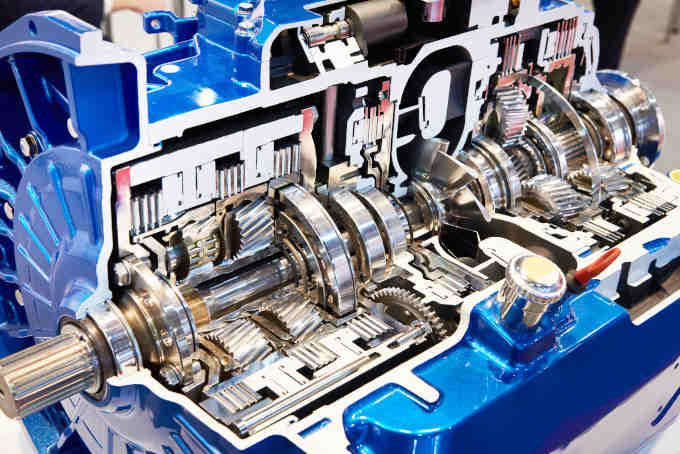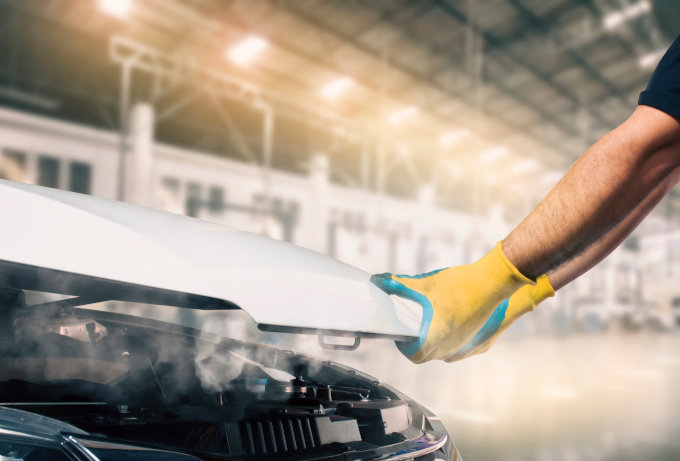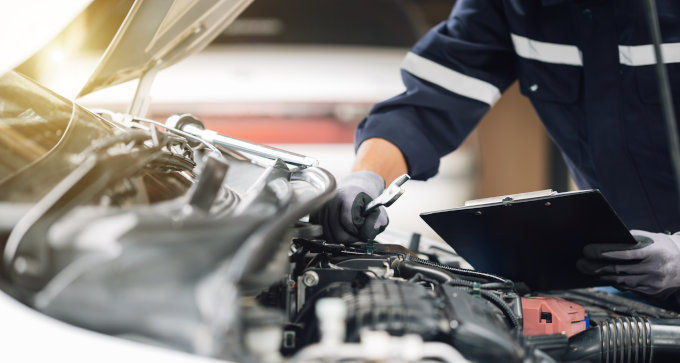There is a good chance that your vehicle is equipped with an automatic transmission. Therefore, it is good to clearly understand how this vital system works.
What Is an Automatic Transmission?
An automatic transmission helps regulate how fast your engine rotates and maximizes power without having to provide direct input from the driver to switch forward gears. A vehicle’s engine needs to rotate at the optimal rate to properly maintain the powertrain's power, economy, and longevity. If the rotation rate is too slow, then the vehicle will lack power and not be able to accelerate properly from a standstill. If the rotation rate is too fast, engine parts can wear aggressively and become damaged.
Automatic transmissions are overwhelmingly popular. Today, 96% of Americans operate vehicles with an automatic transmission.
Types of Transmissions
There are several different types of transmission. Here’s a quick overview of these transmissions and how they operate.
Automatic - Automatically changes the forward gears without direct driver input.
Manual - Uses driver input to select all gears and change the forward gears.
CVT - Also known as a Continuous Variable Transmission. This system is a type of automatic transmission that seamlessly changes through a continuous range of gear ratios using tapered pullies and a push belt.
Dual Clutch Transmission is a multi-speed automatic manual transmission that uses two separate automated clutches and computer control for shifting between gears.
Mechanics of an Automatic Transmission
An automatic transmission is made up of many different parts and systems. Here’s a look at the components found in a standard automatic transmission:
Transmission case - As the name implies, this is the main casing that holds and surrounds the components of the automatic transmission.
Torque converter - This component is located between and connects the engine to the transmission. The primary function of the torque converter is to hydraulically transfer power from the engine to the transmission and multiply the engine’s torque output. Modern torque converters also mechanically couple the engine to the transmission during overdrive. The parts of a torque converter include the drive hub, impeller, stator, turbine, clutch assembly, bearings, and front cover.
Oil pump - Circulates and provides transmission oil (fluid) under pressure to the rotating bearings, clutches, planetary assemblies, torque converter, and other parts such as the bands, valve body parts, and servos.
Bands brake - Holds internal drums and planetary gear components in place to provide different gear ratios.
Transmission oil (fluid) pan – holds the proper amount of automatic transmission fluid in the transmission operation without fluid starvation.
Planetary gear set - Produces the gear ratios and reverse for your transmission.
Clutch packs - Holds friction plates and related components in place to facilitate gear shifts.
Valve body - A transmission valve body is a complex maze of machined pathways and ports using electronic computer-controlled solenoids and valves that routes transmission fluid through the transmission. The transmission control module (TCM) is the transmission’s brain that controls the valve body.
If something were to go wrong with the transmission valve body or severe wear occurs with the valves and bores, the transmission may cease to function correctly and, in some cases, may not function at all.
Output shaft – Connects the driveshaft to the automatic transmission in a rear-drive transmission.
How It Works
Automatic transmissions use hydraulic power, friction plates, and planetary gears to shift gears. First, the torque converter acts as a fluid coupler. The torque converter allows an idling engine to rotate without engaging the transmission. It also transfers power from the engine to the transmission as the RPMs increase.
Here is how the process works from start to finish:
The engine uses the torque converter to transfer its power. There are two halves of the torque converter. One half is connected to the engine and the other is connected to the transmission. Imagine two fans placed in front of each other; one is plugged in, and the other is not. The one that is plugged in is the half that is connected to and turned by the engine; the other is the half that is connected to the transmission. The air from the spinning fan blowing into the blades of the other fan causes the other fan to spin while also allowing it to stop spinning if you were to hold the fan stationary on the transmission side. This is how a torque converter works. The power from the engine is transferred to the engine using transmission fluid to drive the internal clutches and planetary gears. The torque converter is also connected to the hydraulic pump inside the transmission. It provides power to drive the pump to provide the hydraulic pressure needed to engage clutches and shift gears.
The pump also provides fluid to the bearings and other components for cooling and lubricating. The pump is the heart of the transmission.
Next is the valve body. In all modern automatic transmissions, the valve body is controlled by a computer. The valve body directs the pressurized transmission fluid using computer-controlled solenoids to the different clutches, pistons, and servos to select the gears. The computer receives inputs from many places on the vehicle, including the engine (input), wheel speed, transmission output speeds, temperatures, and engine load information. It uses this information to signal the electric solenoids to select when to shift to the proper gear ratio. The electric solenoids act as gates or shutters, opening and closing valves in the valve body to direct the hydraulic fluid where it needs to go. Accumulators and damper springs inside the transmission smooth and dampen the pressure for more comfortable and smoother shifts..
Why Automatic Transmissions Are Popular
As stated before, the vast majority of drivers use an automatic transmission. There are several reasons why automatic transmissions are so popular:
1) Easier to Use with Smoother Performance
An automatic transmission is easier for drivers to use on a day-to-day basis. This is especially true when driving in stop-and-go traffic or on hilly terrains. An automatic transmission handles the automatic shifting of gears without any direction from the driver. Additionally, a manual transmission requires constant upshifting and downshifting along with working a clutch pedal with your left foot. They also tend to be less smooth with a noticeable “jump” when shifted from gear to gear. With an automatic transmission, you get smoother shifts and an easier drive.
2) Smoother & More Consistent Acceleration
Automatics typically shift faster and more accurately than manual transmissions. Shifting a manual transmission involves driver skill and involvement, which opens the possibility of mistakes in operation and timing.
3) Higher Resale Value
Finally, vehicles with automatic transmission are more desirable to consumers. Therefore, they typically have a higher resale value than a vehicle with a manual transmission.
4) More Fuel Efficient
While the myth that manual transmission vehicles are more fuel-efficient than their automatic counterparts persists, this is no longer true. Automatic transmissions are now more fuel-efficient because of added gears and a clutch inside the torque converter that mechanically locks the two halves together at cruising speeds, eliminating slip and any power loss from the torque converter.
Are There Any Disadvantages to Automatic Transmissions?
While automatic transmissions are popular, there are some disadvantages:
1) Less Engaged Driving Experience
Some people still drive a manual transmission because it gives you more control and a more engaging driving experience.
2) More Expensive to Buy
New and second-hand vehicles equipped with automatic transmissions are more expensive, so they are not always an ideal choice when you’re on a tight budget.
3) Higher Maintenance Cost
Automatic transmissions will have higher maintenance costs. This is because automatic transmissions require more frequent servicing, and the higher complexity with many more parts means they can break down more frequently than their manual counterparts.
Warning Signs of Automatic Transmission Failure
Knowing the warning signs of potential automatic transmission issues is helpful. The sooner you bring your automatic transmission in for repair, the better. The longer you drive a transmission with performance issues, the more damage that will occur. This can dramatically increase repair costs. Here’s a look at the significant warning signs of possible automatic transmission failure:
- Refusal to change gears - If your transmission is not shifting gears properly or delaying when you put it into drive or reverse, there is likely an issue with the automatic transmission.
- Burning smell - Look out for any burning smells coming from the vehicle, which can signal transmission issues.
- Slipping gears – Slipping when shifting gears is another common issue with failing automatic transmission.
- Leaking transmission fluid - If you notice a reddish-brown puddle under your vehicle, you are likely leaking transmission fluid. Leaking transmission fluid is a common cause of transmission damage.
- Check Engine Light (CEL) - A check engine light may turn on due to several vehicle issues, including automatic transmission failure.
Knowing the signs of transmission failure and understanding the repair process can save you time and money, so don’t delay. Bring your vehicle in to a transmission specialist as soon as possible.
How to Better Care for Your Automatic Transmission
For professional maintenance and repair for your automatic transmission, visit our AAMCO Knoxville Center. We’ll make sure your transmission is repaired right the first time for safe and reliable driving.











